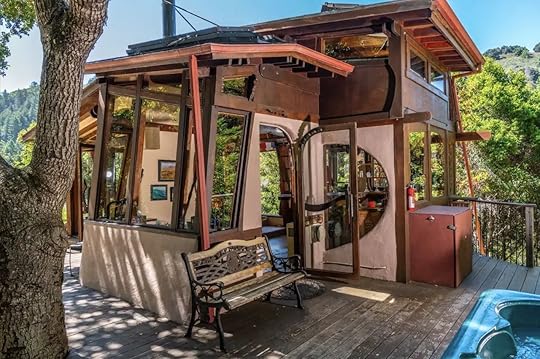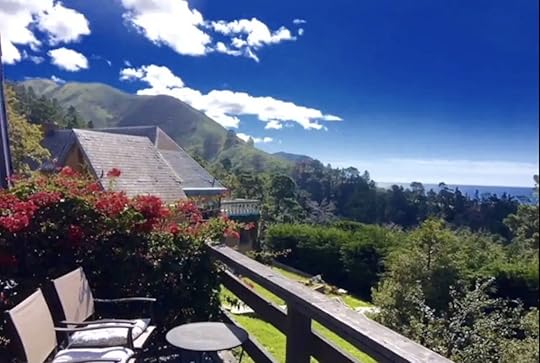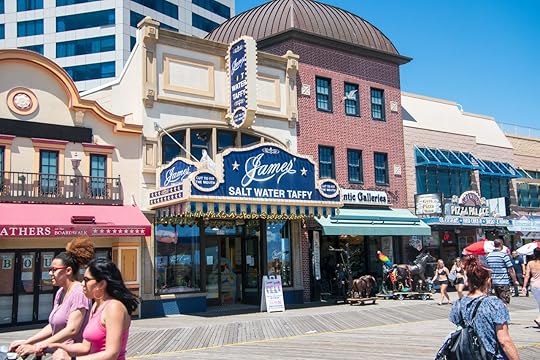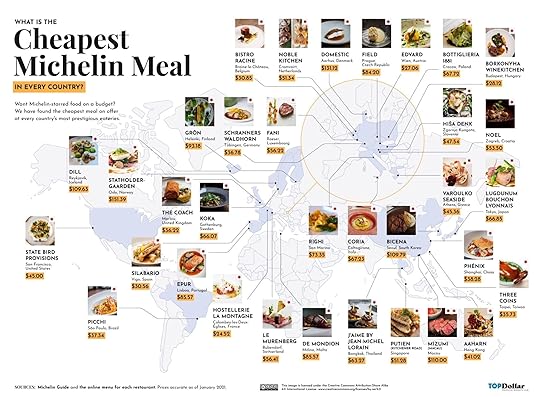Matador Network's Blog, page 679
March 29, 2021
Royal Caribbean vaccinated cruises

As destinations around the world reopen to international travelers with vaccine requirements, so too are cruises. Royal Caribbean just announced a series of Mediterranean cruises that will require passengers to be fully vaccinated.
The seven-night cruises, running from July 10 to October on the Jewel of the Seas ship, will bring guests from Limassol, Cyprus, to various destinations around Cyprus and Greece. Among other locations, the ship will dock at Athens, Mykonos, and Santorini.
Savvas Perdios, Cyprus’ deputy minister of tourism, said in a press release, “We are delighted that Royal Caribbean will call Limassol its home port for the first time ever. This has been an ambition of ours for many years, and we are thrilled that, finally, this dream has come to fruition.”
Before boarding, all adult passengers will have to prove that they are vaccinated against COVID-19, while all passengers under 18 must test negative.
Michael Bayley, CEO of Royal Caribbean International, said, “The vaccines are clearly a game-changer for all of us, and with the number of vaccinations and their impact growing rapidly, we believe starting with cruises for vaccinated adult guests and crew is the right choice. As we move forward, we expect this requirement and other measures will inevitably evolve over time.”
The Mediterranean cruise isn’t the first fully vaccinated voyage Royal Caribbean has announced. Earlier this month, the cruise line unveiled fully vaccinated cruises from Israel, the Bahamas, and Bermuda — all of which are scheduled to set sail this year. 
The post Royal Caribbean is bringing back Mediterranean cruises for vaccinated travelers this summer appeared first on Matador Network.

Airbnbs in Big Sur

We hope you love the spaces and stays we recommend! Just so you know, Matador may collect a small commission from the links on this page if you decide to book a stay, and listed prices are accurate as of the time of publication.
Working from home can be isolating. Especially in busy SoCal and the Bay Area, where it often seems as though the world is moving all around you while you’re glued to your computer screen in that tiny apartment slash home office. We feel you, and we have a suggestion — book an Airbnb in Big Sur, get away for a few days or a few weeks, and jolt your productivity with frequent breaks to surf uncrowded waves, explore new hiking or biking trails, and switch up your usual lunch routine on the Pacific Coast Highway. You have plenty of spaces to choose from, and these are the best Airbnbs in Big Sur for both productivity and recreation.
Luxurious Suite at Hyatt Highlands Inn
Photo: Airbnb
The Hyatt Highlands Inn in Carmel Highlands offers both the privacy of an Airbnb home with the amenities of a hotel resort. The internet is fast, you can post up next to the wood-burning fireplace overlooking the cliffs, or set up poolside surrounded by nature. This is as close as California gets to working remotely in Bali, with the bonus of onsite dining and coffee. In room, you also have a desk, a balcony, and a jacuzzi.
Price: $325 per night
Beautiful Guesthouse in Carmel
Photo: Airbnb
This guesthouse in Carmel is ideal for spending several days removed from the metros. The dedicated workspace looks out into the jungle just north of Big Sur, and as it’s the bottom level of a large house, you’ll enjoy plenty of space and easy access to Carmel. The space is bright, the WiFi is strong, and the home is affordable for longer-term stays of a week or more. No matter how long you book for, the panoramic views from the living room are sure to have you pining for an extra week.
Price: $104 per night
Spectacular Horizon/Ocean View Guesthouse
Photo: Airbnb
Ten minutes south of Carmel Highlands is this secluded retreat designed to accomplish everything a remote worker needs — fueling productivity with fast internet, expansive views of hills and sea, and easy access to cafes and dining. Not only is this spot moments from the water, but it’s also right near hiking and biking trails, Point Lobos Park, and multiple wineries. The host encourages longer stays and offers a dedicated workspace for guests, though you may find yourself tempted to set up shop on the balcony overlooking the ocean.
Price: $361 per night
Big Sur Goat Farm w/ Ocean Views
Photo: Airbnb
Few things are as relaxing as a live animal farm. Work from this cabin in the woods surrounded by chickens, goats, horses, cows, and sheep. Views stretch from the rocky coastline to the surrounding mountains, with easy access to surfing and hiking, though we wouldn’t blame you if you spend most of your non-work time relaxing with the animals. The host lists a bakery, taphouse, and deli all within walking distance.
Price: $650 per night
Spectacular Carmel Coast House
Photo: Airbnb
Listen to the waves crash into the rocks as you work in this two-bedroom house right on the coast. This is a great stay for a small team looking to hunker down and complete a project — the 30-night minimum in place means you’ll have plenty of time for productive work while also being able to enjoy the surf, wine, and trails of nearby Garrapata State Park and the greater Big Sur coast. The house itself features large windows facing the ocean, outdoor seating areas and garden, and space for four guests to sleep in separate beds.
Price: $525 per night
MorningLite Cabin
Photo: Airbnb
An affordable getaway for one or up to four remote workers, this cabin is built high in the hills outside of Palo Colorado Canyon north of Big Sur village. The most unique feature of this cabin is the outdoor bathtub, a great way to relax after a day’s work or post-outdoor exploration. Watch the stars from the deck (or the tub) in the evenings and get to work in the mornings with little to distract you but the trees.
Price: $155 per night
Big Sur Dream Home
Photo: Airbnb
Redwood trees serve as the backdrop to your workspace at this full-home rental south of Carmel. A mountain-view hot tub complements the views, while the interior falls somewhere between a treehouse and a luxury mountain cabin. Take lunch out on the deck among the flowers, though the entire home feels outdoors with its perch above the trees and large, unobstructed windows offering views in all directions. The WiFi is fast, and you won’t find a dedicated workspace with a better view.
$374 per night 
The post Work from Big Sur: The best long-stay Airbnbs to work from home appeared first on Matador Network.

10 iconic boardwalk foods you have to try at the Jersey Shore

There comes a time every summer when my family stuffs their swimsuits and sunscreen in an overnight bag, hops in the car, and drives three hours to Wildwood, on the Jersey Shore. So deeply treasured is this tradition that even all three of my cats have been to Wildwood.
While we spend most of our time lounging on the sand or splashing around in the ocean, what I really look forward to on our annual trips is the boardwalk. This bustling hive of activity is a rainbow of T-shirt stands and blinking neon signs advertising funnel cakes, roller coasters, and ski-ball, the occasional ding ding ding of an arcade game signaling a win, and kids whizzing past the crowds on bikes. Amid this mess of color and sound is some of the most legendary food in the country — the notoriously greasy, fried, and utterly delicious boardwalk snacks.
With so many options advertising the “world’s best” hot dogs, ice cream, fries, and so much more, trying to determine where to stop and what to eat on the boardwalk can feel overwhelming. But if you’re planning a trip to New Jersey and the Jersey Shore this summer, it’s essential that you spend some time snacking and sipping on the boardwalk’s many nostalgia-inducing offerings.
1. Kohr Brothers frozen custard
Photo: Michelangelo DeSantis/Shutterstock
If you’re walking by a blue sign with white letters that reads Kohr Brothers, stop what you’re doing and get in line. For me, Kohr Brothers frozen custard embodies the spirit of the shore. A treat in every sense of the word, this creamy, dreamy delight epitomizes everything that makes the shore great. It makes you feel like a kid again, and it’s the perfect antidote to hot weather. But I shouldn’t have to explain why ice cream is great! Just try it.
Where to find it: Wildwood, Ocean City, Point Pleasant, Seaside Heights
2. Curley’s fries
Photo: Curley’s Fries/Facebook
In keeping with the boardwalk’s long tradition of boastful and totally unprovable claims about its (admittedly very good) food, Curley’s claims that it offers the “best fries in the world.” These crispy, salty crinkle cut fries are tasty — but standard — boardwalk fare. What really sets Curley’s apart is its dipping sauce offerings: ‘Jersey Girl’ is sour cream mixed with Thai chili sauce, while ‘Green Goddess,’ is a blend of chives, garlic, mustard, and mayo, to name just two of the many options. But no matter what shore town you’re in, there will be no shortage of booths hawking paper plates piled high with golden brown fries. The classic toppings in my opinion? Good old ketchup and gooey cheese sauce — best enjoyed while meandering between arcade games and cotton candy stalls.
Where to find it: Wildwood
3. Bob’s Fresh Lemonade
Photo: Bob’s Fresh Lemonade/Facebook
Summer on the beach means most of your time will be spent under unobstructed sunshine. You can cool off with a quick dip in the ocean, or head up to the boardwalk for a sip of a cool beverage. In the summer, the go-to is of course lemonade, the lip puckering, super refreshing drink that immediately brings release from the sun. The perfect cup of lemonade should be equal parts sweet and tart, and for that most people agree that Bob’s Fresh Lemonade is the best on the boardwalk. This old-fashioned classic is best paired with the stand’s other classic boardwalk treats, like funnel cake and fried Oreos.
Where to find it: Ocean City
4. Fudge and salt water taffy
Photo: Alan Budman/Shutterstock
Whether you prefer Shirver’s or Fralinger’s “original” salt water taffy, a handful of this iconic chewy candy is a shore vacation must. Shriver’s claims it has been making taffy since 1898, and calls itself a “taste of summer”; Fralinger’s opened its first shop on the Atlantic City boardwalk around the same time. Since then, salt water taffy has become a Jersey Shore institution, and sweet shops selling their own version dot nearly every block on the boardwalk. Alongside buckets of salt water taffy, these shops will also invariably produce slabs of fudge, delightful squares of soft and melty chocolate in flavors like creamsicle and sea salt caramel — a gift to bring home for yourself (or your family) so you can have a taste of the shore even when you’re miles away.
Where to find it: Atlantic City, Ocean City, everywhere else
5. Fried shrimp
Photo: Brendan Lekan/Shutterstock
Shore towns are known for their abundant seafood — from oysters to crab cakes — but on the Jersey Shore specifically, fried and breaded shrimp reign supreme. These crispy, bite-sized shrimps are easy to munch while you peruse the arcade games and t-shirt stands that populate the rest of the boardwalk. Fried shrimp have more substance than an ice cream cone or a bucket of fries, but aren’t too much. They’ll leave you with enough room to indulge in some fudge or a platter of funnel cake later in the day without being so filling that you feel uncomfortable in your bathing suit when it’s time to return to the beach. No, it’s not exactly a full meal, but remember the boardwalk is all about snacking anyway.
Where to find it: Point Pleasant Beach, Wildwood, Seaside, Asbury Park, everywhere else
6. TLC’s Polish water ice
Photo: adamf612/Shutterstock
Water ice is a super creamy frozen treat without a hint of dairy — just blended ice and juice flavoring. Dispensed from a soft serve machine to give it that smooth ice cream-like texture, water ice is the kind of refreshing sweet treat perfectly suited to a hot beach day. The most famous hawker of water ice is inarguably TLC’s Polish Water Ice; the brand’s watermelon flavor is a particular favorite. Water ice will certainly help you cool down, but that’s not the only reason it makes the list. No matter what flavor you land on,TLC’s Polish Water Ice comes in satisfying pops of color that fit right in with the boardwalk’s rainbow aesthetic.
Where to find it: Ocean City, Wildwood, Seaside Heights
7. Hot dogs
Photo: James Kirkikis/Shutterstock
Boardwalk trawlers can get a hot dog pretty much anywhere on the Jersey Shore boardwalk. It’s a summertime classic that never goes out of style and always manages to taste good no matter where you get it from. Even though it’s a chain, my personal preference is Stewarts in Wildwood for the cheese fries, chili dogs, and root beer floats. There is a wealth of options though: Maui’s Dog House (in North Wildwood) offers toppings like horseradish, Wisconsin cheddar cheese, spicy mustard, and bacon. In Long Branch, institutions like Max’s Hot Dogs (now a diner, though it started off as a stand on the boardwalk) and Windmill are the go-to options. But if you’re simply cruising the boardwalk anywhere on the shore and your tummy starts rumbling, there are quick-stop spots up and down the boardwalk that offer this portable snack on the cheap.
Where to find it: Long Branch, Wildwood, everywhere else
8. Caramel corn
Photo: NC_1/Shutterstock
Caramel corn epitomizes those summer afternoons at the ballpark or the carnival — or the boardwalk. It’s the sort of snack that makes plenty of people nostalgic for childhood, and the stuck-in-your-teeth goodness is the flavor and texture of summer. Buckets of caramel popcorn are a staple down the shore, where sweet indulgences are pretty much the norm no matter the time of day. Johnson’s Popcorn in Ocean City is a favorite, but most shops that sell fudge and other treats will sell paper cups overflowing with caramel popcorn.
Where to find it: Ocean City, everywhere else
9. Funnel cake
Photo: Emily Ranquist/Shutterstock
Any list of classic boardwalk foods isn’t complete without a nod to the (arguable) king of the boardwalk: funnel cake. Ribbons of puffy cake batter are fried, covered in powdered sugar, and then plopped on a paper plate. It’s impressively simple, and enduringly beloved. If you think that you can skip the funnel cake on your shore trip because you know what it tastes like, you’re wrong. Eating funnel cake heaped on a paper plate as the summer sun beats down on you, while surrounded by the cacophony of boardwalk noises, engenders a joyful, childlike feeling that only this boardwalk dessert has the power to conjure.
Where to find it: Anywhere there’s a boardwalk down the shore
10. Tornado potato
Photo: gu min/Shutterstock
You’ll see it advertised on awnings up and down the boardwalk: the famous tornado potato. For the uninitiated this moniker might sound strange, even intimidating. But so much about what makes boardwalk food so good is that it reinvents new ways to eat classic foods (please see: funnel cake, creamsicle fudge, and chili cheese dogs) — and the tornado potato is no different. Essentially it’s a fried, spiralized potato that, like everything else worth eating on the shore, you can enjoy while walking.
Where to find it: Anywhere there’s a boardwalk down the shore 
The post 10 iconic boardwalk foods you have to try at the Jersey Shore appeared first on Matador Network.

Cheapest Michelin-star restaurants

Michelin-starred restaurants tend to conjure an image of white tablecloths and a bill topping $200, but that’s not always true. Some Michelin-starred restaurants are serving up world-class meals for under $50. You just have to know where to look. Top Dollar, a financial insights hub, created a helpful map of the most affordable Michelin-recognized restaurants in every country.

To zoom in on the map, click here.
Photo: Top Dollar
Top Dollar reviewed over 500 one-, two-, and three-Michelin-starred restaurants and noted their cheapest menu options. The final list has 25 one-starred restaurants where the menu comes in at under $50 and another 75 entries with restaurants costing under $100. Unfortunately, you won’t find any three-star restaurants under $100 on the list.
The cheapest Michelin-starred restaurant is Hostellerie la Montagne in Colombey-les-Deux-Eglises, France, where the menu is set at an incredibly affordable $24.52. In the US, the cheapest restaurant is State Bird Provisions in San Francisco, with a three-course meal for $45.
If you have more to spend, the cheapest three-star meal you’ll find is at Le Palais in Taiwan, with a meal for $138.63. In the US, the cheapest three-star meal can be found at Le Bernardin in NYC for $175.
To see the full list of the cheapest Michelin-starred restaurants in the US, check out Top Dollar’s report. 
The post This map shows the cheapest Michelin-starred restaurants around the world appeared first on Matador Network.

The 10 most sought-after US destinations this spring and summer, according to Airbnb

We hope you love the spaces and stays we recommend! Just so you know, Matador may collect a small commission from the links on this page if you decide to book a stay, and listed prices are accurate as of the time of publication.
As Americans look forward to spring and summer, reviving July 4th traditions, and perhaps even taking their first real vacation in a long time, inspiration is always welcome. Airbnb put together a list of its most popular destinations for this spring and summer, based on search data from 2,000 US adults. It compared search volume for trips planned between March and August 2021, with searches from earlier in the year, to learn which destinations are seeing heightened demand. From Maine to Montana, these are the 10 most sought-after US destinations this spring and summer.
1. Southern Maine
Photo: haveseen/Shutterstock
There’s a good reason why Maine’s nickname is “Vacationland.” For New Englanders, Maine is the go-to destination for summer vacations, whether it’s a coastal getaway in York or Ogunquit, a rural cabin getaway on Sebago Lake, or camping along the Saco River. This beach retreat in York is just a six-minute walk to both downtown and the beach, and at $142 per night, you won’t find a better value.
2. Cape May, New Jersey
Photo: ESB Professional/Shutterstock
Everyone knows about the Jersey Shore, but don’t worry — you don’t need to fist pump in a boardwalk nightclub to enjoy Cape May. At the southern tip of the Jersey Shore, Cape May is a relaxing destination known for its beach and Victorian-era houses. There are also bike trails, breweries, kayaking, and other leisure activities to take advantage of. Staying by the beach is, of course, a must. This cozy cottage just a few steps from the ocean is only $156 per night, and ideally located for the quintessential Cape May experience.
3. Round Top, Texas
Photo: Airbnb
This small town in Texas, with fewer than 100 residents, is the perfect long-weekend getaway from bigger cities like Dallas and Austin. Just an hour-and-a-half from Austin, the historic town of Round Top is known for its antique shops, 19th-century aesthetic, and cultural sites. There’s also a winery and whiskey distillery for your tasting pleasure. This cottage — designed to resemble a large birdhouse — is the perfect place to immerse yourself in the area’s natural scenery. Perched among the oaks and elms, the cottage is $425 per night.
4. Lake Powell, Arizona
Photo: Andrea Izzotti/Shutterstock
Lake Powell is a human-made reservoir along the Colorado River, located both in Arizona and Utah. In addition to taking a boat out on the water, you can explore the nearby Glen Canyon Dam or check out the Instagram-famous Antelope Canyon. The canyon’s dramatic cravasses and smooth rock walls have made it a favorite subject for photographers. This three-bedroom home in Page is close to both Antelope Canyon and the equally photogenic Horseshoe Bend, and it’s just $138 per night.
5. Cape San Blas, Florida
Photo: Frank Bobe III/Shutterstock
Located along Florida’s panhandle, Cape San Blas is considered one of the best beach destinations in the country. The beach at St. Joseph Peninsula State Park is famous for its white sand and lack of crowds. There are also boat rentals available for fishing and kayaking, tons of great seafood restaurants serving local fare, and a lighthouse you can’t miss. This three-bedroom private beach cottage in Port St. Joe is just $179 per night, 15 minutes from the cape, and has a long sun deck perfect for soaking up the rays.
6. Orderville, Utah
Photo: Lukas_Vejrik/Shutterstock
The small town of Orderville, home to just 500 residents, is the perfect escape for some quiet relaxation. Orderville has an abundance of outdoor activities right on its doorstep, like hiking Mount Carmel and exploring the slot canyons. You can also visit the Daughters of Utah Pioneer Museum. The best way to appreciate a tiny town is, of course, in a tiny home. At $285 per night, the Escape tiny house is ideally located between Zion and Bryce national parks, and perhaps most importantly, it has pool and hot tub access.
7. Mammoth Cave, Kentucky
Photo: Bram Reusen/Shutterstock
Stretching for 53,000 acres in the hills of south-central Kentucky, Mammoth Cave National Park is more than just a cave. It also has river valleys, forests, historic churches and cemeteries, sinkholes, and of course, the world’s longest cave system. Staying in this four-person cottage is the epitome of rural Kentucky living. There’s no Wi-Fi or cable, but there’s a fire pit and you’ll be completely surrounded by nature. At just $105 per night, it’s an absolute steal.
8. Kitty Hawk, North Carolina
Photo: David Louis Econopouly/Shutterstock
Kitty Hawk is no stranger to the summer vacation scene. It’s known for its stretches of sandy beach, hiking trails, and historical importance as the site of the Wright Brothers’ first successful flight. Aside from the obligatory Wright Brothers Memorial, you can spend some time at the Outer Banks Arboretum, or just relaxing on the beach. This waterfront home might be the best way to thoroughly enjoy Kitty Hawk, as it can accommodate parties of up to 10 people. Located right on the beach, this $236 per night oceanfront house is also just a short walk to shops and restaurants.
9. Lake of the Ozarks, Missouri
Photo: TommyBrison/Shutterstock
A popular destination for those seeking warm-weather adventure, the Lake of the Ozarks is known for its swimming, boating, paddle boarding, and even zip line and helicopter tours. Like any true lake destination, there are plenty of waterfront accommodations, restaurants, entertainment venues, and over 1,100 miles of shoreline perfect for your beach getaway. You can’t go wrong with any lakefront accommodation here, especially the Little Blue Lake Front Cabin. This three-bedroom cottage is situated on a quiet cove with a private dock, close to the lake’s most popular restaurants and attractions, and costs $196 per night.
10. Whitefish, Montana
Photo: Kimberly Shavender/Shutterstock
Located in the Rocky Mountains, Whitefish is right on the doorstep of the stunning Glacier National Park. The park could easily keep you busy for days, but the town itself is also worth exploring for its boutique shops, artisan market, historic train station, and quiet lake. The best way to truly experience Whitefish is undoubtedly by staying as close to nature as possible. This two-bedroom mountain condo, for $139 per night, allows you to do just that. 
The post The 10 most sought-after US destinations this spring and summer, according to Airbnb appeared first on Matador Network.

5 routes to uncover German history

In Germany, traveling “back in time” is practically a given. No corner of the country is devoid of history — modern, medieval, or ancient — periods and eras overlapping in one swift panorama.
Of course, certain regions lend themselves to certain stories: Do you want to unfurl the pages of the Roman era? Baroque? Or perhaps you want to go way back to the Stone Age? Take a look at the routes below, itineraries spanning some 7,000 years, and find the world you want to explore.
German Limes Route
Photo: Günther-Bayerl/Lookphotos
Running through Rhineland-Palatinate, Hesse, Baden-Württemberg, and Bavaria, this spectacular 350-mile route — accessible by car or via bike path — is an incredible way to experience Germany’s memorable countryside. Beyond the age-old towns and villages, the endless rolling landscapes and beautiful views, the route was explicitly founded to provide a look into the country’s ancient Roman sites. “Limes” means “paths” in Latin, eventually taking on the meaning of “borders.” This route follows the northern, fortified edges of the Roman Empire, and is essentially the German length of Hadrian’s Wall.
As such, it links no fewer than 80 towns and a string of related monuments and museums dating from Roman times. There are hundreds of sentry posts, 120 fort sites (most founded around 100 CE), plus baths, towers, and parts of fortifications, like ramparts, ditches, walls, and palisades — some of which have been reconstructed, some of which are original.
Saar-Palatinate Baroque Route
Photo: Sergey Dzyuba/Shutterstock
Although the Baroque period began in Italy in the late 16th century, it arrived in Germany somewhat later in the 18th, where it gave rise to some magnificent artworks in the shape of gardens, stately homes, churches, and palaces.
This 62-mile route strings together several towns that possess some of the most striking examples of Baroque architecture in the country, such as the former royal seats of Saarbrücken, Blieskastel, Zweibrücken, and Ottweiler. Saarbrücken alone has a slew of sites, including the famous Baroque Hall of the Huguenot Church and the Watchmaker’s House, one of the youngest Baroque buildings on the route, dating from the 19th century. Other highlights are Ottweiler’s Rose Garden, the Witwen Palace in Eutin, the ruins of Castle Karlsberg — near Homburg — and Blieskastel’s impressive Schlosskirche, or “castle church.”
Romanesque Route
Photo: Michael Bader/GNTB
Since 2007, the Romanesque Route has been part of the TRANSROMANICA, a European cultural route connecting Romanesque structures — the oldest of which date to the late 10th century — in Germany with those across eight other countries.
The German section traces the footsteps of Otto the Great, founder of the Holy Roman Empire, exploring the areas around the Harz highland region and the River Elbe for some 750 miles. Spanning dozens of towns and some 90 buildings, it spotlights an array of fortresses, palaces, cathedrals, and monasteries — notable among the list are the cathedral treasures of Halberstadt, Merseburg, Naumburg, the Collegiate Church in Quedlinburg, and Magdeburg Cathedral, which contains the tombs of Otto the Great and his first wife, Edith.
German Half-Timbered Houses Route
Photo: Francois Thierens/GNTB
Founded in 1990, this route runs for nearly 2,000 miles through a string of some 100 fairytale towns that showcase various styles of medieval half-timbered buildings. The highlights are endless, but not to be missed are impossibly charming cities like Konstanz and Lindau, Meersburg and Bad Urach, Esslingen and Wernigerode. Esslingen is thought to have the oldest row of half-timbered houses in the country, built around 1330. All in all, the country has 2.5 million of these structures still standing, several centuries after they were first erected.
As well as incredible half-timbered houses (Fachwerk), visitors can also find spa resorts, nature parks, vineyards, and museums, as well as a range of other architectural styles — Baroque, Renaissance — from across time and place.
Route of Megalithic Culture
Photo: travelpeter/Shutterstock
Finally, it’s time to go way back. The unique, 205-mile Route of Megalithic Culture was launched in 2006 by a collective of archaeologists, astronomers, historians, and tourism experts, and that right there tells you a lot. It aims to promote, preserve, and provide visitors a deep dive into Megalithic culture across Germany. Megalithic means Stone Age, and it’s called “Stone” Age for a reason.
Winding its way across Germany’s northwest, the route links places of archaeological interest with an emphasis on the 5,000-year-old Hünengräber — Megalithic graves — dotted all around the regions of Osnabrücker Land, Emsland, and Wildeshausen Geest.
One notable stop is the Karlsteine, a rock grave associated with Karl, King of the Franks, which contains a Neolithic passage grave from the fourth millennium BCE, as well as burial sites from the Funnelbeaker culture. The route also brings together museums, educational institutions, and charities to foster cross-border collaborations, and there’s even a 129-mile hiking trail (the Hünenweg). You want ancient history and a path to explore it? You got it. 
The post Uncovering German history: 5 travel routes that take you back in time appeared first on Matador Network.

March 26, 2021
The case for, and against, a vaccination passport

In March of 2020, as countries closed their borders to slow the spread of COVID-19, it seemed like safe travel would be on hold indefinitely. A vaccine released less than a year later provided hope, but also surfaced another major question for the travel industry: How can countries regulate international travel in a way that prevents another major outbreak?
Vaccination passports (meaning a document containing proof of vaccination that is required to travel) have become a popular suggestion for one possible solution to that question — and one with passionate opinions on both sides.
On the one hand, a vaccination passport would help limit the spread while helping to restart the global tourism industry. On the other hand, there’s the risk that such a document would exacerbate inequality among individuals and nations.
We connected with eight travel industry experts to gather the pros and cons of a vaccination passport to better understand what this would mean for you.
For: A historical and modern precedent for the framework already exists“To understand the paths forward we need to talk about the two problems the paths forward are trying to solve,” Bryan Del Monte, the president of The Aviation Agency and a former director at the United States Department of Defense, says. “The first is did you get the vaccine? The second question is how do we know you’re telling us the truth?”
Proof of vaccination is already a part of life in the United States. Vaccination records are needed to get into public school, and the same goes for college. Proof of vaccination is also required for some travel — you have to show a yellow signed and stamped International Certificate of Vaccination or Prophylaxis card to travel to certain parts of the world, for example.
“Prior to COVID when you went to France, Germany, Canada, the Caribbean, wherever, they didn’t say, ‘Let’s see your measles and mumps vaccination, or let’s see your diphtheria and tetanus vaccination,'” Del Monte says. “Why? Because those vaccinations are widespread in the US and in many other countries, so the chance of you representing a pathological risk is pretty low even if you objected and didn’t get the shot.”
Del Monte sees a COVID-19 vaccination passport working the same way as a measles, mumps, or tetanus vaccination. In the future when more people in more destinations have been vaccinated, the need for proof will drop off.
Against: Non-vaccinated countries could have a greater risk of exposureThe worst case scenario, says the Electronic Frontier Foundation’s director of engineering Alexis Hancock, is that travel of any kind further spreads COVID-19 to populations that aren’t vaccinated.
The EFF is a nonprofit organization working to “defend civil liberties in the digital world.” In December, the organization published a story cautioning how a digital vaccination passport could be the catalyst for a “system of national digital identification that can be used to systematically collect and store our personal information.”
Hancock also cautions that the disparity could be made worse if 30 percent or so of Americans aren’t vaccinated. This could be an issue if travel-approved vaccinated people are allowed to travel yet are still exposed abroad or at home and could possibly transmit the virus to people in countries where the vaccine is still not widespread.
“The science is still being researched if vaccines are effective against spread,” Hancock says. “This argument glosses over that to justify measures to reopen the economy in ways that could harm public health.”
For: Public health is a government responsibility
Photo: Kite_rin/Shutterstock
Others argue that a government mandated vaccination passport falls within the government’s mandate to protect public health. During the Trump administration, much of the responsibility for safety fell on individuals and businesses. This put the liability on airlines, hotels, restaurants, and other businesses, as well as gave businesses control over tests — and control over personal data and DNA collected from those tests.
“This type of activity is an inherently governmental activity,” Del Monte says. “We’re regulating people’s movement, we’re regulating people’s liberties, we’re curtailing their access to travel, and we’re curtailing businesses’ operating and rights of property. In this country we have this requirement of due process with laws and political process that’s inherently governmental.”
Del Monte uses security as an example. It wasn’t up to football stadiums or airlines to prevent a large scale terrorist attack after 9/11, for example. Airport security changed for everyone after a would-be terrorist tried to use a shoe bomb, and the same goes for liquid limits. COVID-19 has killed more than half of a million people in the US and upended every facet of life. Measures to keep it from rapidly spreading is in a way a security measure to protect the country from a repeat of 2020.
Against: Accessibility disparity for people who are poor or can’t get vaccinated“The assumption that a traveler can easily get the vaccine is where the problem begins,” says forensic and clinical psychologist Dr. Andrew Mendonsa. “Many minority residents simply do not trust the healthcare system due to experienced bias, institutional racism, or simple poor care. Next, there are often costs and shame associated with seeking care. Perhaps poor health, needing to get a ride, co-pays, or taking time off from a job where a person isn’t legally working and does not have paid sick time can be barriers.”
A vaccination passport would create a class of people who are free to travel and a class of people who aren’t able to cross borders.
“My concern as a healthcare professional is that if folks can’t travel legally, they will pursue unsafe travel options like crossing borders illegally or utilizing coyotes to re-enter the US,” Mendonsa says. “These options add insult to injury for the person or family — especially if their immigration status is not valid.”
The other concern when it comes to disparities between people who are rich and poor has to do with technology both at home and abroad.
“How do you create an app or a document that’s available everywhere and everyone is on the same page?” says Deb Pati, the founder of The Visa Project. Pati agrees with the concept of a vaccination passport, but is also aware of how difficult it could be to implement in an equitable way. “What about the people who don’t have access to a smartphone or technology? And finally, if it is accepted everywhere, what about travelers from countries that are really lagging behind in vaccination? Should they still be allowed to travel or not?”
For: It sets up a framework for safe travel now and for future pandemicsNavigating the changing regulations is difficult even for people immersed in the travel industry.
“It’s hard for me to keep track of varying requirements country-to-country, and it’s my job to stay on top of it,” says founder of Scott’s Cheap Flights and chief flight expert Scott Keyes. “I can’t imagine how daunting it must feel for most travelers, just hoping to be able to take a trip. Until there’s consistency about what travelers can be expected to show, like a vaccine passport app that’s accepted everywhere rather than a hodgepodge of different options, there will be a chilling effect on international travel.”
Setting up a framework now will help in the future as well.
“I suspect the US, European Union, and other countries will conclude this isn’t the last rodeo, so they will put in procedures to protect from and catch outbreaks,” Del Monte says. “Five or 10 years from now you might see an international regime with respect to public health, but that will take about a decade to hammer out.”
Against: Disparity between countries
Photo: Ringo Chiu/Shutterstock
If one thing has been clear about the early days of the international vaccine rollout, it’s that there’s a huge difference in access between wealthy and poor countries. It’s an important part of a conversation about vaccine passports, says Chizoba Anyaoha, co-founder of TravSolo.
“How would developing countries even start their vaccine program,” Anyaoha says, “after suffering greatly from the economical effects brought on by the pandemic? That is a question we need to look at and examine.”
Anyaoha adds that the lack of tourism dollars due to the pandemic has already strained economies that relied on travelers, and the strained economy will make it harder for certain countries to recover and set up a proper vaccination program for their own citizens to be protected as travel restarts.
More complications arise if you consider that countries will develop vaccination passport standards at different speeds and with different qualifications. Getting an international standard would be difficult, to say the least, due to competing priorities, and landing on specifications that every country agrees with (that Russia’s vaccine holds the same weight as China’s which is respected on an international level the same as ones developed in the US or UK, for example) would take time.
“A standard global approach to a passport would add benefit,” says Bruce Rosenberg, COO of HotelPlanner. “However, if all countries have separate rules, then the value would be decreased or fees would be even higher to obtain reciprocity of the passport between countries. Different countries will have different requirements so there would need to be a standing body to oversee the passport — maybe the WHO? I can see another issue coming up that each country may only recognize specific vaccines versus all vaccines.”
For countries with more strict requirements, it could require a higher barrier to entry for a visa. An international testing standard, rather than a vaccination passport, could be an alternative.
“I do not think any countries will benefit from a vaccine passport if it becomes mandatory,” Rosenberg says. “I would instead recommend a test pre-arrival to a destination and another test for the return home. Make the passport optional at present. This will be a boon to testing providers. I can see tests being done at airports, hotels, urgent care centers, pharmacies, and other locations.”
For people who used to be regular travelers but who are now hesitant or resistant to get the shot, a required vaccination passport could be the encouragement that they need. On the flip side, if nothing changes for people who are vaccinated then some may choose to go about their lives as is.
“In this country,” Del Monte says, “people saying that if they get a shot and nothing changes, then they’re like, ‘well wait a minute, what’s the point of getting the shot if I don’t get more freedom?”
Del Monte sees President Joe Biden’s statement encouraging vaccination in order to return to normal as a sort of carrot and stick approach. A vaccination passport would be the push that people need.
Against: The added burden of fakes and efficacy“A vaccine passport would be based on the vaccine taken by the traveler,” Rosenberg says. “The passport would have a date of effectiveness according to when the vaccine was taken. The efficacy of the vaccine needs to be part of the passport. Would ongoing antigen tests be required to continue checking on the effectiveness of the vaccines? How do different variants of COVID affect the vaccine would also need to be covered.”
There would be further complications if the need for a vaccination passport was extended to travel inside of a country.
“How would I even know someone’s card is valid? We don’t have a national ID to vote,” says owner of the Historic Smithton Inn B&B Rebecca Gallagher, “but I’m supposed to require one to stay in my B&B? There isn’t even a reliable card that will tell me if the dog someone shows up with at my property is actually a service dog as they say, not a pet.”
Countries would also need to settle on a universal way to check that a vaccination passport is legitimate. Various standards could lead to various entry lines at the border, or worse, forgeries. Like forgeries of other kinds of identification, it’s a problem, but not one that can’t be regulated.
For: Tourism is a major economic driver around the worldFor many countries around the world, tourism is a major, if not the main, way that residents make money. A vaccination passport could help bring travel to places that would otherwise experience a continued and worsening economic depression.
“Once it is established scientifically that high rates of immunization also bring down infection rates and once we know that an vaccinated individual cannot or is not very likely to transmit COVID-19 a vaccine passport will be a game changer,” says Juergen Keller, CEO and co-founder of the South America tour company SouthAmerica.travel. “Tourism is an important part of GDP in many countries, and these are likely to be the countries which benefit most from vaccine passports.”
In this case, a vaccination passport would be a middle ground between complete lockdown and uninhibited travel.
“There is a huge pent-up demand for international travel, and tens of millions of people who rely on tourists to earn a living,” Keyes says. “But governments need to be confident they can allow international tourism again without compromising the health and safety of their own citizens. Vaccine passports are a stepping stone to allow that international tourism to reopen safely before we fully defeat the pandemic worldwide.” 
The post The case for, and against, a vaccination passport appeared first on Matador Network.

10 of the best Airbnbs in Tokyo, from a zen garden art house to the central city

We hope you love the spaces and stays we recommend! Just so you know, Matador may collect a small commission from the links on this page if you decide to book a stay, and listed prices are accurate as of the time of publication.
Tokyo is the most populous city on Earth, with 37 million people in the greater area. In this sense, it’s the perfect Airbnb city. Tokyo’s enormous population means there are a lot of options to choose from, and you’ll get pretty competitive rates for your night’s stay. Here are some of the best Airbnbs in Tokyo that will put you close to the best izakayas, nightlife, and entertainment districts. These units are perfect for experiencing the urban Tokyo lifestyle without breaking the bank, saving you that extra cash for eating as much ramen and yakitori as possible.
Entire serviced apartment in Chuo City
Photo: Airbnb
Lodging operator Spatium runs this cozy unit that is ideal for experiencing Tokyo and Japanese hospitality all in one. The rental is in a hotel but feels more like an apartment complete with a chabudai, a low-legged dining table that’s found in traditional Japanese homes. It’s a short walk from this Airbnb to numerous train stations, restaurants, cafes, and attractions like the Art Aquarium Museum and Kabukiza Theatre. The host also offers discount rates for those who want to stay for an extended period of time.
Price: $118 per night
BnA art suite and zen garden
Photo: Airbnb
This unit is designed by the art group 51.3 G-Wave — led by prominent Japanese artist Taku Sato — and by architect Keigo Fukugaki, who is also responsible for the Facebook and Pinterest offices in Tokyo. This Airbnb in particular, as the name suggests, is highlighted by a zen garden and artistic design. You’d be hard pressed to find an apartment anywhere that’s more outfitted for the perfect Instagram. Here, you have easy access to central Tokyo, though the most memorable part of your trip may be this apartment.
Price: $215 per night
Entire apartment near Shinjuku
Photo: Airbnb
In the grand tradition of Tokyo apartments, this unit is small and efficient. It has everything you need for a comfortable stay, including a workspace, kitchen, slippers, full bed, and a traditional Japanese futon that doubles as the couch. It also provides a free pocket Wi-Fi device, so you can get online not only while chilling by the bedside flatscreen television but also as you stroll around the surrounding area. The location is ideal. Shinjuku is a short walk from this rental, and nearby subway stations give you easy access to other neighborhoods.
Price: $41 per night
H20 Stay Morishita
Photo: Airbnb
Four people can stay in this luxuriously spacious (by Tokyo standards) apartment in Morishita. It’s walking distance to Kiyosumi Garden and the Museum of Contemporary Art, as well as multiple subway stations that allow you to zip around the inner city without too much hassle. The apartment itself features a double bed and a fold-out couch, along with Wi-Fi and kitchen necessities. The operator runs multiple units in the same building; each have the same setup but slightly unique aesthetics.
Price: $129 per night
Skytree view entire apartment in Koto City
Photo: Airbnb
Part of the appeal of staying in the heart of any city is the views, right? Spend your pre- and post-activity relaxation sessions on the balcony of this epic private room staring out at Tokyo’s legendary skyline. The quaint room features a double bed and two Tokyo-perfect floor mattresses, along with a kitchen, bathroom, and a washing machine. The unit is efficient and affordable, and what it lacks in over-the-top luxury it makes up for as the perfect place for stays in Tokyo that last longer than a few days. The other perk is its proximity to any type of cuisine you could want, be that unagi or sushi, a big plate of fried noodles or a juicy burger. The Oshiagi train station is nearby, as are the tourist attractions of eastern Tokyo.
Price: $55 per night
Luxury two-bedroom penthouse near Imperial Palace
Photo: Airbnb
Tokyo is an expensive city, making the fact that you can rent this luxurious two-bedroom penthouse in a Japanese Kundanshita hotel for a fraction of the cost of the Four Seasons all the more impressive. Located in the Chiyoda area near downtown, the 914-square-foot apartment sleeps up to seven people and offers walkable access to eight different train lines at nearby stations. Also nearby are tourist stops like the Imperial Palace, the Science Museum, and multiple parks in which to escape the urban chaos.
Price: $183 per night
Glass house in Shinjuku with roof balcony
Photo: Airbnb
There’s something to be said for 360-degree views of one of the world’s most breathtaking cities. Two adjacent bedrooms with three beds sleep up to six in this spacious multi-floor rental, capped by a rooftop balcony that offers that stunning view. The open concept of the apartment and its minimalist decor give it a modern feel often absent from affordable rentals in Tokyo, and while you’re right in the heart of Shinjuku, this rental offers security and privacy.
Price: $403 per night
Yagoda Yangidori West open-air bathhouse
Photo: Airbnb
Experience a private Japanese bathhouse in this entire-home rental that is among the most traditional, culturally rich rentals available in Tokyo on Airbnb. The home has a bedroom, kitchen, living room, and common area. But the highlight is upstairs — here, you’ll find an open-air bath area on the terrace. The host allows only two guests, making it a perfect rental for a couple or solo traveler. Cafes, shops, and fine dining are all available a short walk away or you can hop on the train to Shinjuku and other trendy areas. For an additional charge, the host can arrange airport transfers for you, as well.
Price: $311 per night
Ikebukuro Shinbo elite all-intelligent villa
Photo: Airbnb
Here, you’ll enjoy a rooftop deck and flower garden until 6:00 PM, and an elegantly designed and constructed home to call your own during your stay in Tokyo. The house is bright and the living decor adds a touch of natural charm while staying in the world’s biggest city. Take advantage of the jacuzzi tub and rooftop grill, and the fully equipped kitchen, bathrooms, and living space suitable for up to eight guests. The house also has fast WiFi and plenty of room to spread out and get some rest after a day exploring the city.
Price: $154 per night
Ascott Marunouchi Tokyo
Photo: Airbnb
Budget lodging is nice, sure, but sometimes you just want to ball out like a rockstar when visiting one of the world’s legacy cities. This is the unit in which to do just that. High above the city, you’ll look-out over central Tokyo. The luxury apartment is inside a mixed-use development with nice restaurants and shopping on site, along with a train station. If you’re here on business, traveling in a group for a bachelor party or bachelorette party, or otherwise need a fancy spot to crash, this unit in the central business district has you covered. Up to four guests can come together to cover the cost.
Price: $1,091 per night 
A version of this article was previously published on September 15, 2014, and was updated on March 26, 2021, with more information.
The post 10 of the best Airbnbs in Tokyo, from a zen garden art house to the central city appeared first on Matador Network.

Keep your eyes on the night sky to catch the ‘super worm moon’ this weekend

Full moons are known for their wacky names, and this weekend’s moon is no exception.
The next full moon — called a “super worm moon” — will occur on Sunday, March 28, at 2:48 PM ET, though it won’t actually rise on the East Coast until 7:00 PM that night. It will appear full for about three days around this time, from Saturday morning to Tuesday morning.
The name does refer to worms, as they tend to emerge from the soil around this time of year. The “super” part refers to the fact that the moon happens to be full at the point in its orbit where it is closest to Earth, which will make this weekend’s show quite easy to see for people blessed with a clear sky.
The “Worm Moon” name first appeared in the 1930s Maine Farmer’s Almanac, which started publishing moon names for each month of the year. According to the almanac, the full moon in March was variously called the crow, crust, sap, sugar, or worm moon.
The next full moon will occur on April 26, and is called a pink moon. It’s also considered a supermoon. 
A version of this article was previously published on March 20, 2019, and was updated on March 26, 2021, with more information.
More like thisAstronomy10 stargazing events you don’t want to miss in 2021The post Keep your eyes on the night sky to catch the ‘super worm moon’ this weekend appeared first on Matador Network.

Everything on these Korean islands is painted a bright shade of purple

Banwol Island, located off the southwestern coast of South Korea, is an island like no other. Formerly a small fishing community, the island gained both domestic and international recognition when locals turned everything into a beautiful shade of lilac.
From rooftops to telephone boxes to rice to lavender fields, everything in Banwol is colored purple. The bold theme has attracted crowds of eager visitors which has boosted the local economy and put the small community on the map. Nearby Bakji Island is also part of the purple initiative (both are connected by three purple bridges which can be crossed by foot) and although the two islands have fewer than 150 residents combined, they have attracted nearly half a million tourists since 2018.
What’s so special about the purple islands?
Photo: Shinan County
Purple islands Banwol and Bakji take their purple project very seriously. Locals don purple outfits while tending to purple flowers such as the New England asters, magnolias, and the thousands of lavender plants on the island.
The people have fully embraced the 2015 initiative that was meant to create an attractive island destination and it’s been extremely rewarding. Since the official start of the project in 2019, over 487,000 visitors have visited the islands. Reuters reported that Shinan County has invested $4.25 million in the project.

Photo: Shinan County
While on the islands, travelers can also immerse themselves in the color code. For as little as 2,000 Korean won ($1.77), visitors can rent purple outfits including jackets, vests, hats, and umbrellas to seamlessly blend in with the surroundings. But if you come to the islands already dressed in the local hue, you get free entry.

Photo: Shinan County
Bakji Island was built over 900 years ago and can be explored both on foot and by bike. Banwol has a walking route that takes tourists along its purple telephone booths, flower fields, and bridges. Exploring on foot is best, so those who rented a car can leave it by the island entrance as it won’t be necessary. All of the tourist attractions on the two islands are run by locals. Banwol has a purple cafe and the two islands each have a local hotel that serves a menu consistent with the purple theme including purple rice, local fish, and kimchi.
How can I visit?
Photo: Shinan County
From Seoul, take the subway to Seoul Station or Yongsan Station, followed by the express bus to Mokpo. From there, you will either need to take a taxi or hire a car and drive to Doori-port, where you can purchase a ticket for the island for 3,000 won ($2.65). The journey from Seoul takes about six hours in total. 
The post Everything on these Korean islands is painted a bright shade of purple appeared first on Matador Network.

Matador Network's Blog
- Matador Network's profile
- 6 followers



